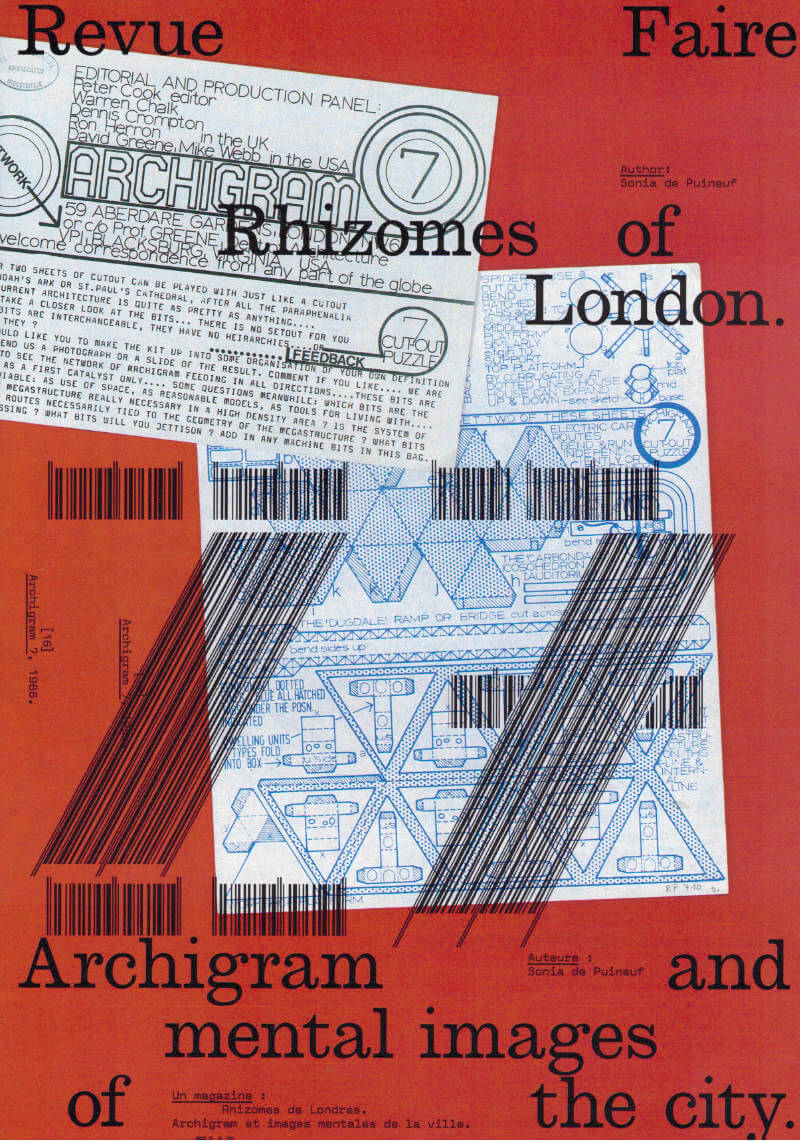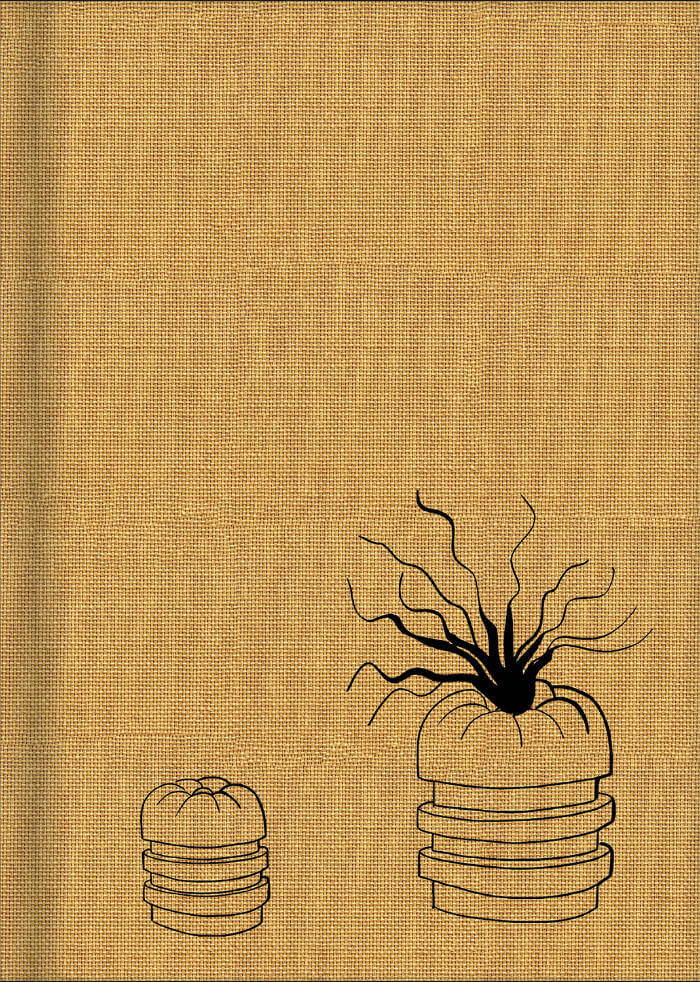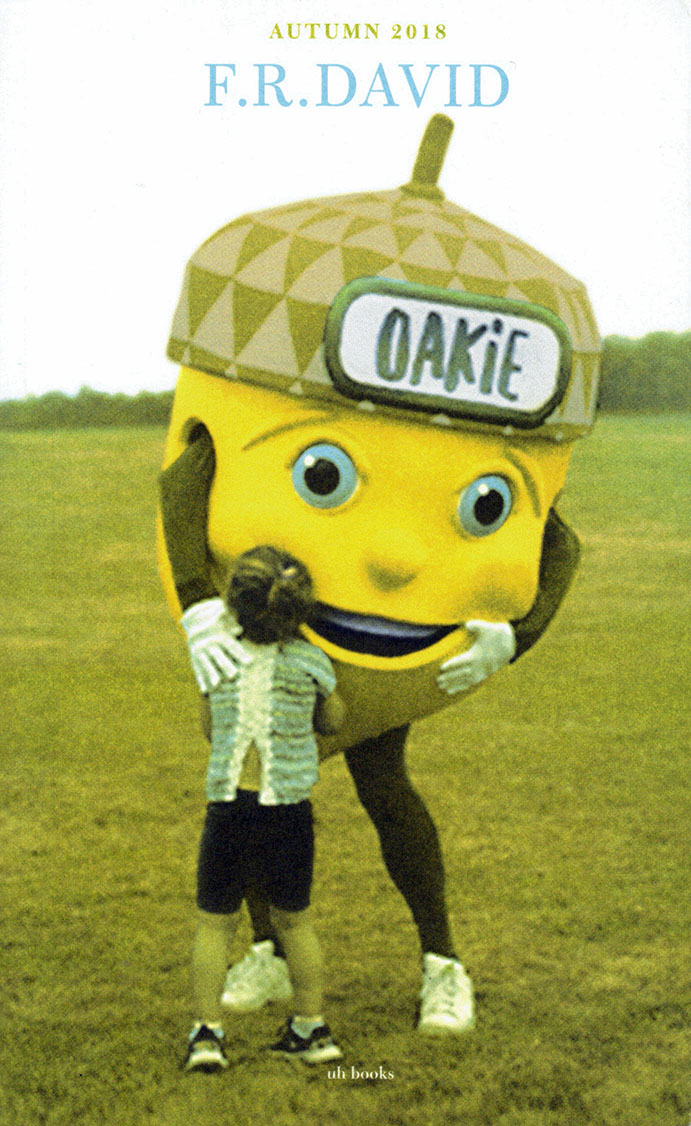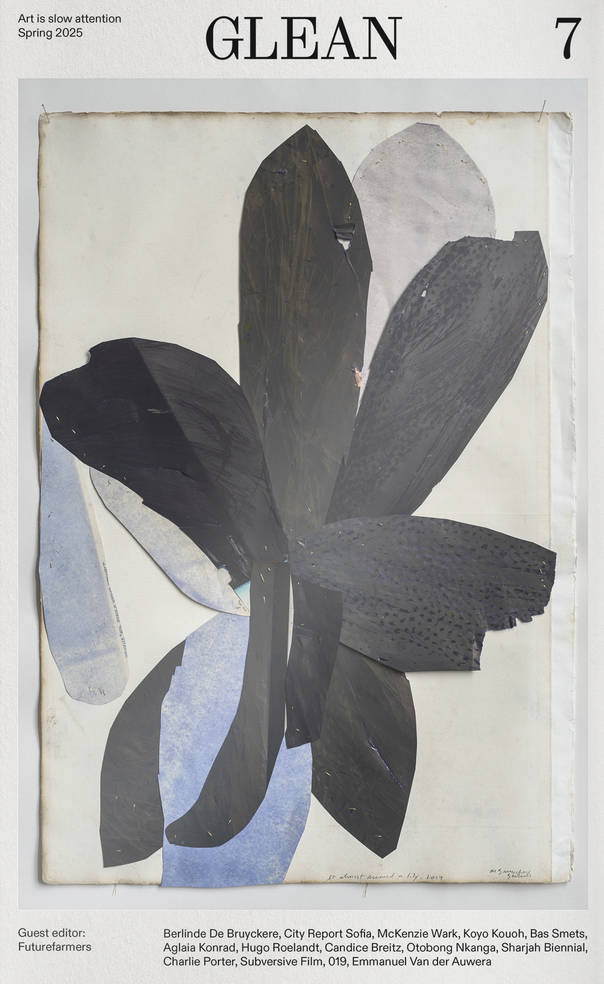
Revue Faire n°27: Rhizomes of London
A mine of images and ideas for architectural and urban-planning practices, the journal Archigram (1961–70) has already been the subject of close reading and analysis by architects, historians, theoreticians, and architecture critics. This study approaches Archigram from a different angle, attempting to interpret it as a successful artifact of graphic design by confronting it with the achievements of its time and other inspirational eras of editorial and environmental graphic design.
It aims to explain the graphical evolution of the journal through the graphical stimuli of London—the city where the Archigram architects worked on a daily basis. It is an attempt to demonstrate that the publication, at first glance confusingly heterogeneous, is akin to a comprehensive mapping of the secret whirrs and the more obvious trends of the English metropolis, where the futuristic utopia of the dynamic city took shape in such a particular way. By identifying London’s potential during the mythical Sixties, the Archigram journal stands out as a rhizomatic image, a living mirror of the urban organism.
Language: English






